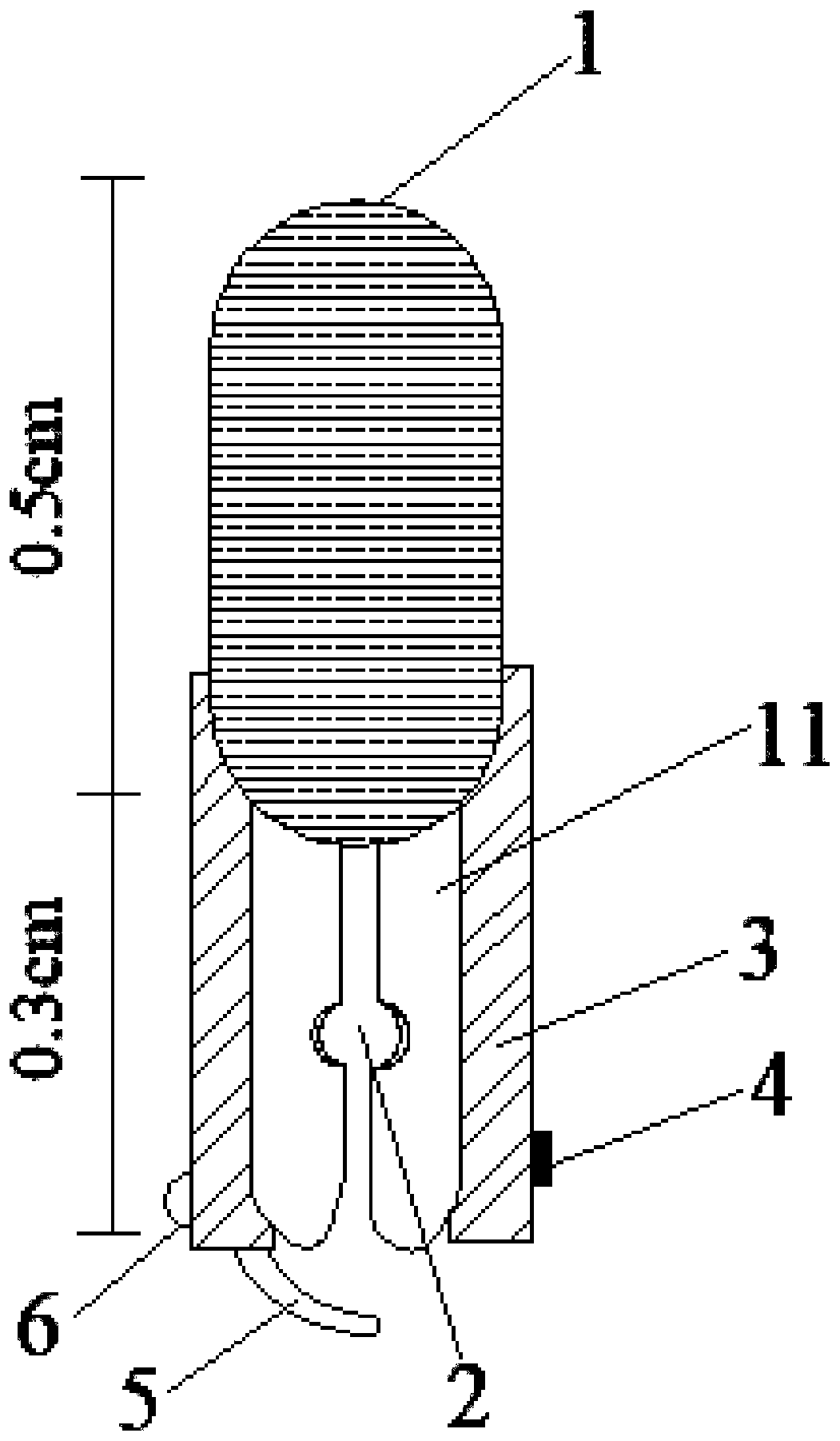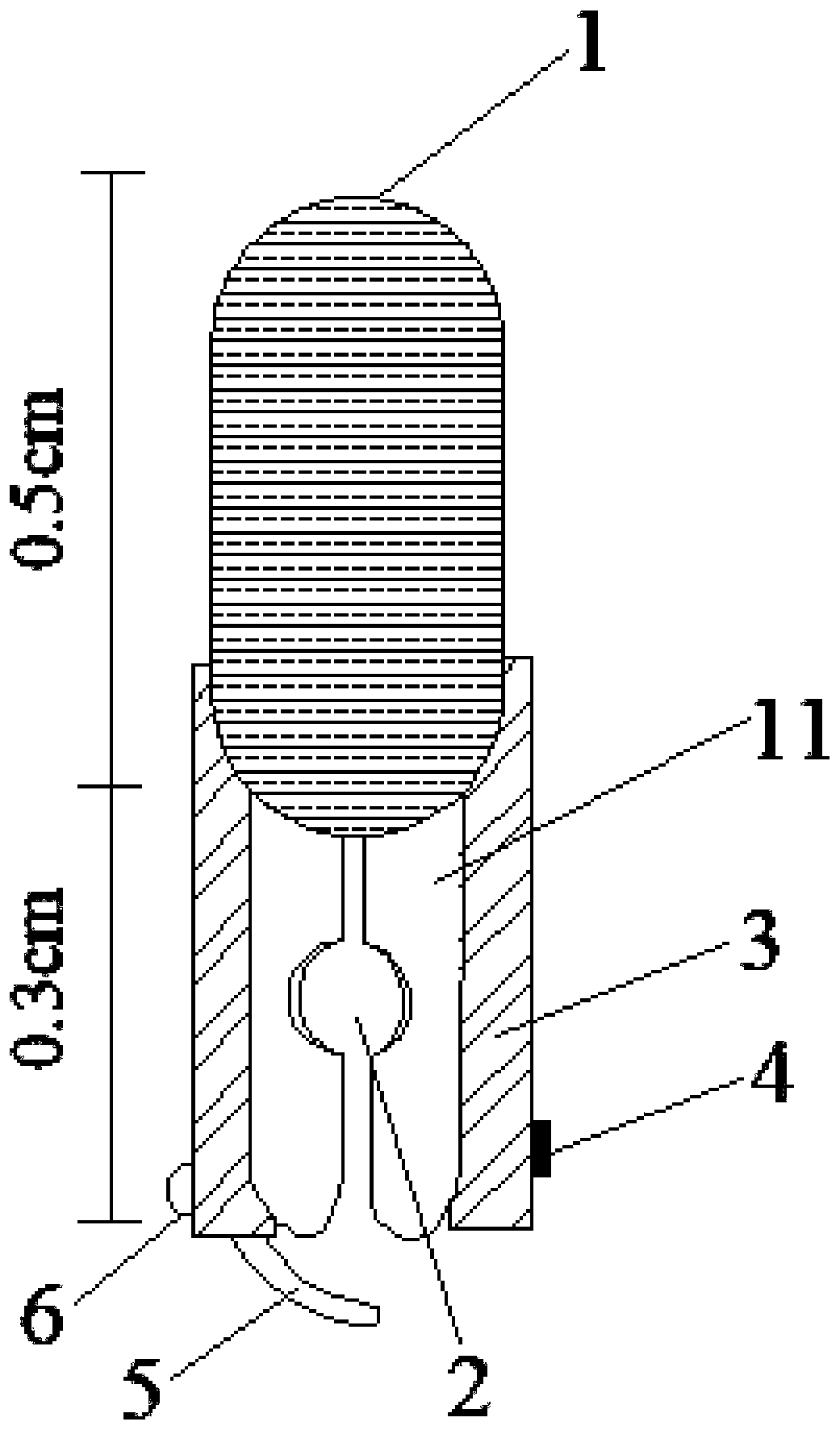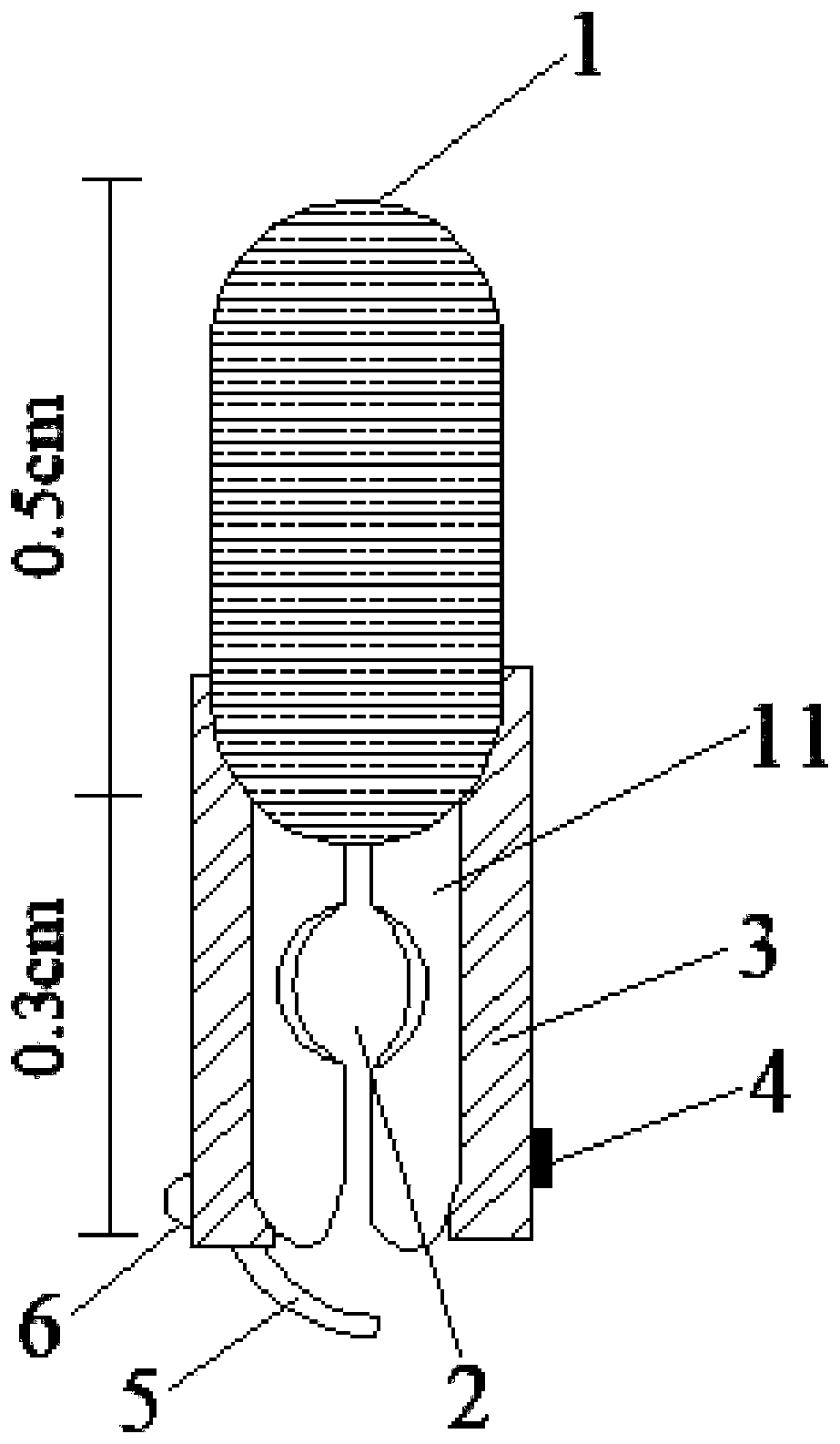Adjustable blood vessel clamping device for 3D printing animal experiments
An animal experiment, 3D printing technology, applied in the field of biomedical engineering, to improve the quality of surgery, speed up surgery, improve efficiency and success rate
- Summary
- Abstract
- Description
- Claims
- Application Information
AI Technical Summary
Problems solved by technology
Method used
Image
Examples
Embodiment 1
[0059] Example 1 3D printing adjustable blood vessel clamping device for animal experiments
[0060] Please refer to attached Figure 1-6 .
[0061] attached figure 1 It is a schematic diagram of the front structure of the small-diameter clamping hole of the present invention. attached figure 2 It is a schematic diagram of the front structure of the middle-diameter clamping hole of the present invention. attached image 3 It is a schematic diagram of the front structure of the large-aperture clamping hole of the present invention. attached Figure 4 It is a side structure schematic diagram of the present invention. attached Figure 5 It is a schematic diagram of the rubber anti-slip structure of the forearm of the vascular clamp. attached Image 6 It is a schematic diagram of the resin layer structure of the vascular clip.
[0062] An adjustable blood vessel clamping device for 3D printing animal experiments, including a blood vessel clamp body, a blocking structur...
Embodiment 2
[0073] Embodiment 2 Comparison of two different blood vessel clips
[0074] See Figure 7 , A. Current status of vascular clip: I. Physical map of vascular clip; II. Physical map of smooth vascular clip forearm; III. Schematic diagram of vascular clip, with a total length of about 1.6cm; IV. Schematic diagram of vascular clip forearm; B. 3D printing can regulate blood vessels Schematic diagram of the clamp, the length of the vascular clamp body is 0.5cm, and the length of the vascular clamp arm is 0.3cm. 1, 2, and 3 are schematic diagrams of vascular clips with mild, moderate, and severe stenosis.
Embodiment 3
[0075] Embodiment 3 Establishment of Chronic Cerebral Ischemia Animal Model
[0076] 1 Experimental method
[0077] 1) Pentobarbital sodium (4mg / kg) with a mass fraction of 2% anesthetizes the rat;
[0078] 2) Rats were fixed in the supine position, and after routine disinfection, a midline incision was made on the neck. like Figure 8 As shown in A, carefully separate the muscles, blood vessels and mucous membranes to expose the bilateral common carotid arteries without damaging the peripheral nerves;
[0079] 3) The right common carotid artery was ligated with 4-0 surgical thread, and the bilateral common carotid artery was ligated in the model group (carotid artery ligation);
[0080] 4) The vascular clip clamped the left common carotid artery, and the model group (vascular clamp) clamped the bilateral common carotid artery;
[0081] 5) Suture the skin layer by layer;
[0082] 6) The normal group underwent the same operation, but without ligation or clamping of blood v...
PUM
 Login to View More
Login to View More Abstract
Description
Claims
Application Information
 Login to View More
Login to View More - R&D
- Intellectual Property
- Life Sciences
- Materials
- Tech Scout
- Unparalleled Data Quality
- Higher Quality Content
- 60% Fewer Hallucinations
Browse by: Latest US Patents, China's latest patents, Technical Efficacy Thesaurus, Application Domain, Technology Topic, Popular Technical Reports.
© 2025 PatSnap. All rights reserved.Legal|Privacy policy|Modern Slavery Act Transparency Statement|Sitemap|About US| Contact US: help@patsnap.com



